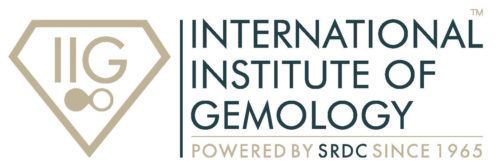|
Getting your Trinity Audio player ready...
|
For centuries, jewellery has served as a symbol of affluence and prosperity. Even in eras with limited metallurgical knowledge, individuals adorned themselves with precious gems, sometimes even being interred with these cherished possessions.
Across the annals of time, the methodologies employed in crafting exquisite jewellery have undergone a transformative evolution. Today, artisans benefit from cutting-edge technology, enabling the creation of intricate pieces on a grander scale than ever before.
In the contemporary landscape, artificial intelligence (AI) has ushered in a revolution in the manufacturing and retailing of jewellery. Industry giants like Microsoft are actively exploring AI-driven design processes, while avant-garde luxury brands are seamlessly integrating AI into their e-commerce platforms to redefine the online shopping experience.
Exploring the latest transformative innovations reshaping the fashion industry is a compelling endeavour. Read on to uncover five revolutionary advancements propelled by artificial intelligence within the jewellery sector.
The global pandemic has fundamentally altered consumer behavior, with online shopping assuming unprecedented importance. Despite the inability to flaunt jewellery during lockdowns, the jewellery industry mirrored the surge in e-commerce. In Spain alone, online purchases of jewellery and watches soared to €13.2 million in the second quarter of 2020, marking an impressive 86% increase from the same period in 2019, as reported by the Spanish National Commission on Markets and Competition (CNMC).
Projections indicate that the momentum of online shopping will persist in 2022, driven in part by the continued prevalence of remote work. Consequently, the jewellery industry is prioritizing the alignment of online stores with evolving consumer expectations. Overcoming challenges such as customer mistrust and apprehensions about choosing the perfect piece has become paramount. Enter artificial intelligence, with its advanced capabilities poised to empower customers to virtually try on jewellery, scrutinize pieces as if physically present, and receive personalized assistance akin to an in-store shopping experience.

The “The AI Powered Enterprise: Unlocking the potential of AI at scale” report underscores the transformative impact of AI on businesses. Companies leveraging artificial intelligence witness a remarkable surge of over 25% in the sales of goods and services. Moreover, AI proves instrumental in automating tasks that would traditionally consume significant human hours.
In essence, artificial intelligence emerges as the linchpin in the jewellery industry’s quest to embrace the digital age and cater to the evolving needs of consumers. The symbiosis of advanced technology and timeless craftsmanship paves the way for a new era in jewellery design and retail, where innovation and tradition seamlessly converge.
Artificial intelligence (AI) has brought about a profound transformation in the jewelry market, revolutionizing the way manufacturers design, produce, and sell their pieces. Throughout history, jewelry has been a symbol of wealth, and today, AI is reshaping the industry in unprecedented ways. Let’s explore five groundbreaking innovations that highlight the impact of AI on the jewelry sector.

- Digital Try-Ons: In the era of online shopping, especially accentuated by the COVID-19 pandemic, consumers are increasingly turning to the internet for their jewelry purchases. To address the challenge of not being able to physically try on jewelry, AI-powered digital try-ons have emerged. Companies like James Allen have developed tools that enable customers to virtually try on rings and earrings. Utilizing advanced AI interfaces, these tools map the customer’s face or hands, allowing them to visualize how a piece would look on them, akin to popular social media filters.
- Online Ring Size Measurement: Determining the correct ring size, especially for surprise proposals, can be a daunting task. AI has facilitated this process through apps like Tiffany’s and Ring Size™ by Hitched. By leveraging AI technology, these apps allow users to measure their ring size by placing their phone over an existing ring. This not only adds an entertaining dimension but also addresses concerns about purchasing the right-sized ring online.
- Visualizing Jewelry in Online Stores: One hurdle faced by online jewelry retailers is providing customers with a detailed view of the products. AI, coupled with machine learning and 3D hologram technology, enables the creation of immersive displays on websites. James Allen, for instance, lets customers visualize their jewelry and diamonds in 3D, facilitating a closer inspection of the product. This innovative approach enhances the online shopping experience by allowing customers to preselect products and try them on virtually.
- Real-Time Diamond Inspection: AI is transforming the diamond industry by providing real-time inspection capabilities. Diamond Pro’s AI tool, Ringo, exemplifies this innovation. It can identify diamonds that appear “clean to the naked eye” for consumers based on budget and preferences. This technology has the potential to revolutionize the diamond market by assuring customers of the purity and quality of their purchases. As AI continues to develop, it may even detect imperfections not visible to the human eye, enhancing consumer confidence.
- Enhanced E-commerce with AI: The integration of AI into e-commerce platforms is a game-changer for the jewelry industry. Companies like Microsoft are pioneering AI-driven design processes, allowing for the creation of intricate and sophisticated pieces on a larger scale than ever before. Luxury brands are embracing AI in their online stores to offer personalized experiences, helping customers choose the perfect piece with virtual assistance. The ability to automate processes with AI also contributes to increased sales and operational efficiency.
In conclusion, the marriage of artificial intelligence and the jewelry industry is proving to be transformative. From digital try-ons and online sizing tools to immersive product visualization and real-time diamond inspection, AI is reshaping the way consumers interact with and purchase jewelry. As the industry continues to evolve, embracing AI technologies will likely be a key factor in staying competitive and meeting the changing demands of consumers in the digital age.

